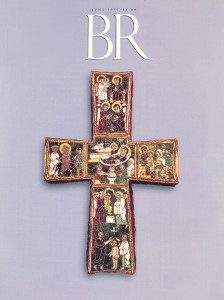
Gazing in adoration at the newborn Jesus, three shepherds join Joseph and Mary in the manger in an early-15th-century painting of The Nativity, attributed to the Netherlandish artist Robert Campin. Outside the rustic shed appear two women, the midwives who attended Jesus’ birth.
Midwives! What are they doing in the picture? The Bible does not say that any women other than Mary were present at the birth.
Granted, Campin has taken some common liberties with the biblical story, transforming the Bethlehem countryside into a mountainous northern European landscape and depicting the baby in the nude, although the Gospel of Luke says he was “wrapped in bands of cloth” (Luke 2:12). Yet the artist has faithfully portrayed much of the story of the shepherds who “went with haste and found Mary and Joseph, and the child lying in the manger” (Luke 2:16).
Although midwives do not appear in the biblical account of Jesus’ birth, they do play an important role in two texts that belong to the Christian Apocrypha: the Proto-Gospel of James and the Gospel of Pseudo-Matthew.1
Already a library member? Log in here.
Institution user? Log in with your IP address.

